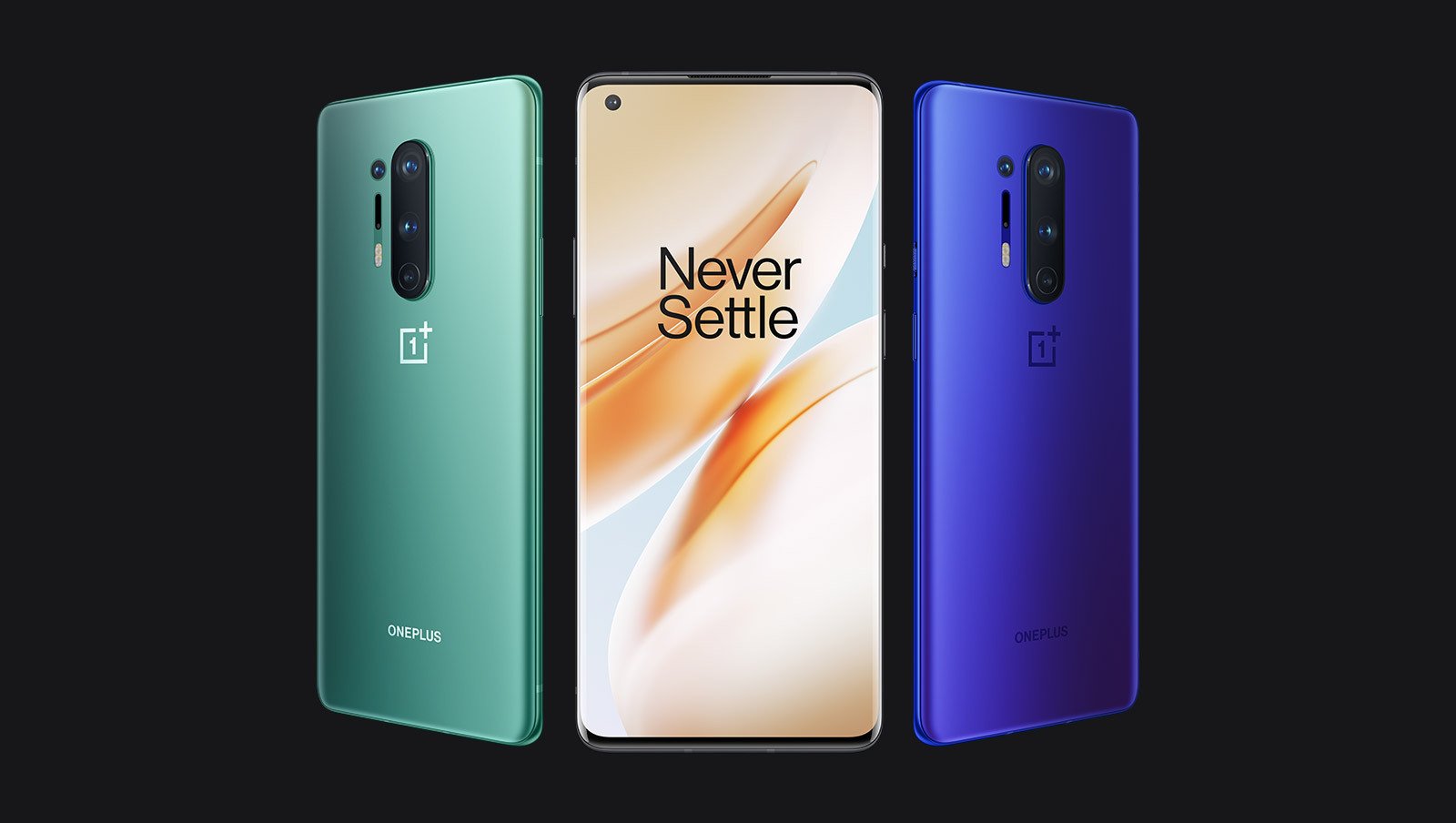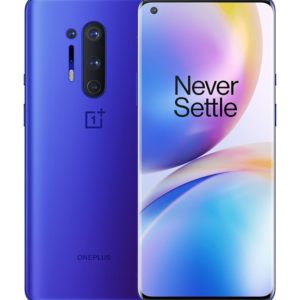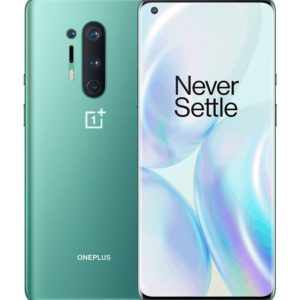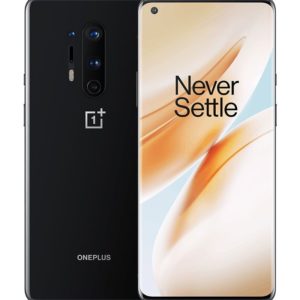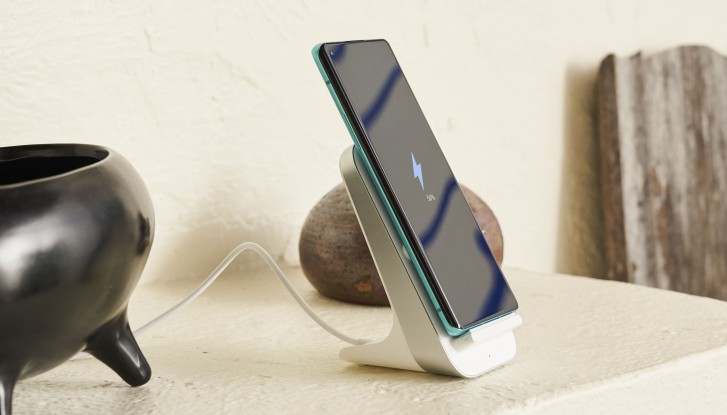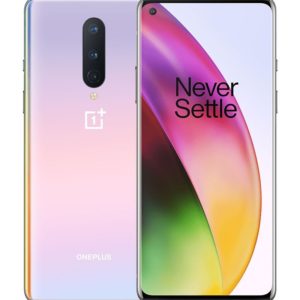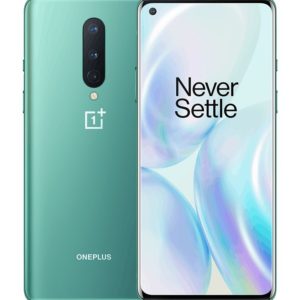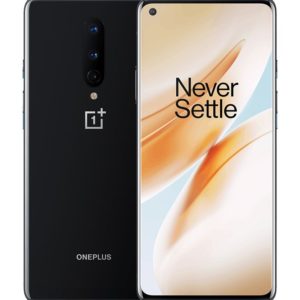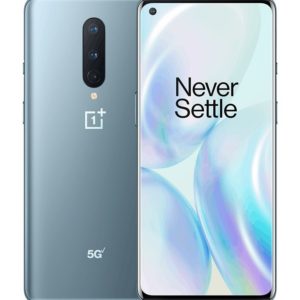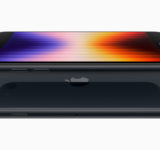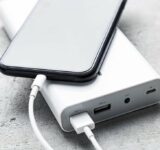The much-anticipated brainchild of OnePlus, the OnePlus 8 and OnePlus 8 Pro, has finally arrived. And as OnePlus promised, both devices are priced below $1000 — the maxed out Pro model is available for $999, while the base configuration is priced $100 cheaper. The vanilla OnePlus 8, on the other hand, has a $700 price tag.
OnePlus 8 Pro
The OnePlus 8 Pro brings the goodness of high refresh rate screen in the form of a 6.78-inch QHD+ Fluid AMOLED display, the largest on any OnePlus device yet, and also the first to come with 120Hz refresh rate. The touch sampling rate of the device maxes out to 240Hz to decrease input lag.
The display, calibrated at the factory level, achieves a record-breaking color accuracy. Besides, it’s a 10-bit panel with HDR 10+ support as well as an HDR Boost feature to take the previous 8-bit content and further enhance it. The device also has MEMC, which converts 24fps videos to 120fps, which can be a ‘polarizing’ feature, but OnePlus says the optimization on the software level will ensure that the interface runs smoothly at 120fps with no hiccups.
Also, if you look at the top, there’s a punch-hole cutout for a selfie camera that replaces the pop-up mechanism seen on its predecessor. The OnePlus 8 Pro also comes with an official IP68 rating, the first of its kind on OnePlus device.
An additional new feature is the wireless charging tech, which OnePlus said was not ready — and looks like, it finally is. Warp Charge 30 Wireless, as the company calls, can charge the device at up to 30W and can juice up the battery from 0 to 50% in 30 minutes. Surprisingly, there’s support for reverse wireless charging as well.
Wired charging, though, is still tad bit faster. The 30W Warp Charge 30T fills up 50% of the battery in 23 minutes. Nonetheless, a larger 4,510mAh battery on the 8 Pro (from 4,000mAh on the 7 Pro), will make sure that you won’t have to charge the device until bedtime, but even if you have to, the wireless charging is as fast as the non-T Warp Charge 30.
Let’s talk about the camera. The OnePlus 8 Pro gets two 48MP sensors as well as a telephoto and an assistant module. The first primary camera uses a bigger 1/14″ Sony IMX689 sensor with 1.12µm native pixel size and 2.24µm binned pixel size. Also, the omnidirectional autofocus support on all pixels should provide more clarity to pictures.
It can shoot 4K videos at 60fps by making use of the new Single Shot 3-HDR feature that lets you capture three exposures at once, dramatically enhancing the dynamic range. The camera uses varying of Optical and Electronic Image Stabilization.
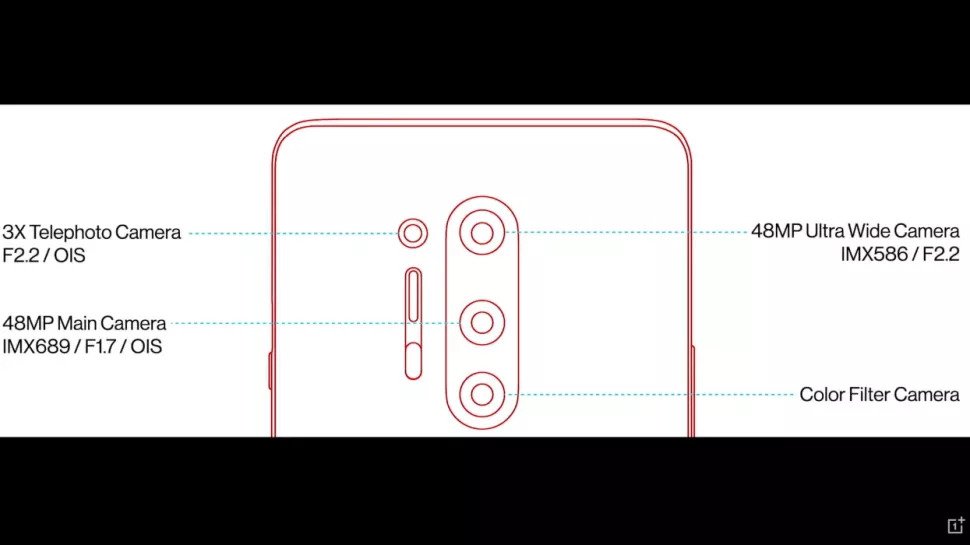 Image: OnePlus
Image: OnePlusThe second 48MP camera has a 120-degree ultrawide lens and also acts as a macro camera capable of taking snaps at 3cm distance.
At the third is an 8MP telephoto shooter with 1.0µm pixels, f/2.44 aperture as well as OIS. The fourth module is an all-new Color Filter camera, which can be helpful while rendering various color effects.
Under the helm is a Snapdragon 865 chipset accompanied by LPDDR5 RAM — 30% faster as well as 20% more energy efficient than the RAM on the previous version. It still uses the UFS 3.0 storage.
The phone supports sub-6GHz 5G connectivity, whilst there’s WiFi 6 as well that supports speed up to 9.6Gbps — faster than the 5G modem with 7.5Gbps on a mmWave connection.
About the pricing, the OnePlus is priced at $899 for the base variant with 8GB of RAM and 128GB storage. If you want to upgrade to the 12GB/256GB variant, you need to shell out $999. The phone will be available in Ultramarine Blue, Glacial Green, and Onyx Black color option.
OnePlus 8
The non-Pro model, that is the vanilla OnePlus 8 has a slightly small 6.55-inch screen with 1080p+ resolution and 90Hz refresh rate, much like the OnePlus 7T. However, the panel is not as same as the 7T — it’s curved and has a punch-hole that holds selfie camera, replacing the notch. The screen, though, supports HDR10+ and has color accuracy just like its Pro sibling.
At the back, the OnePlus 8 uses the 48MP main camera with an older IMX586 sensor, which means there’s no omnidirectional AF. Again, the pixels are significantly smaller at 0.8µm, though, pixel binning is still supported with OIS and EIS combo.
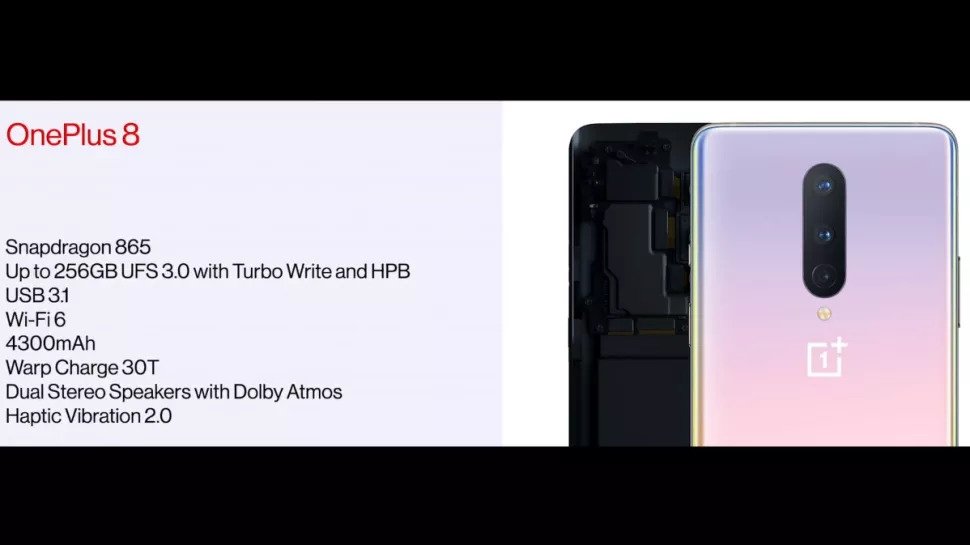 Image: OnePlus
Image: OnePlusNext is a 16MP ultra-wide shooter with 116-degree FoV but no macro support, which is done by a dedicated 2MP macro lens instead.
Powering the phone is a 4,300mAh battery — 13% more capacity over the 7T. It also supports Warp Charge 30T, charging the phone from 0-50% in just 22 minutes. However, wireless charging is absent from the device.
Just like the Pro model, the OnePlus 8 has Snapdragon 865 chipset with similar memory setups: 8GB of RAM and 128GB storage as a base variant, and 12GB/256GB version if you need more. But the RAM is a slower LPDDR4X tech, like in its predecessors.
The support for 5G and WiFi comes as a standard, as the company marches towards a new connectivity option. For users in the US, Verizon will get a version of the phone that supports the faster mmWave as well.
Both the Pro and non-Pro model shares something in common, including an in-display fingerprint scanner, Dolby Atmos stereo speakers as well as improved haptic feedback for the enhanced gaming experience.
Pricing wise, the OnePlus 8 will cost $700 for the 8GB/128GB base variant, whereas you can upgrade to 12GB/256GB for $800. Both phones will be available starting from April 24. As for the price in Nepal, both phones could cost upward of Rs. 80,000.
The phone has two new color options: Interstellar Glow with glossy finish and Glacial Green with a matte finish. There’s also Onyx Black.


